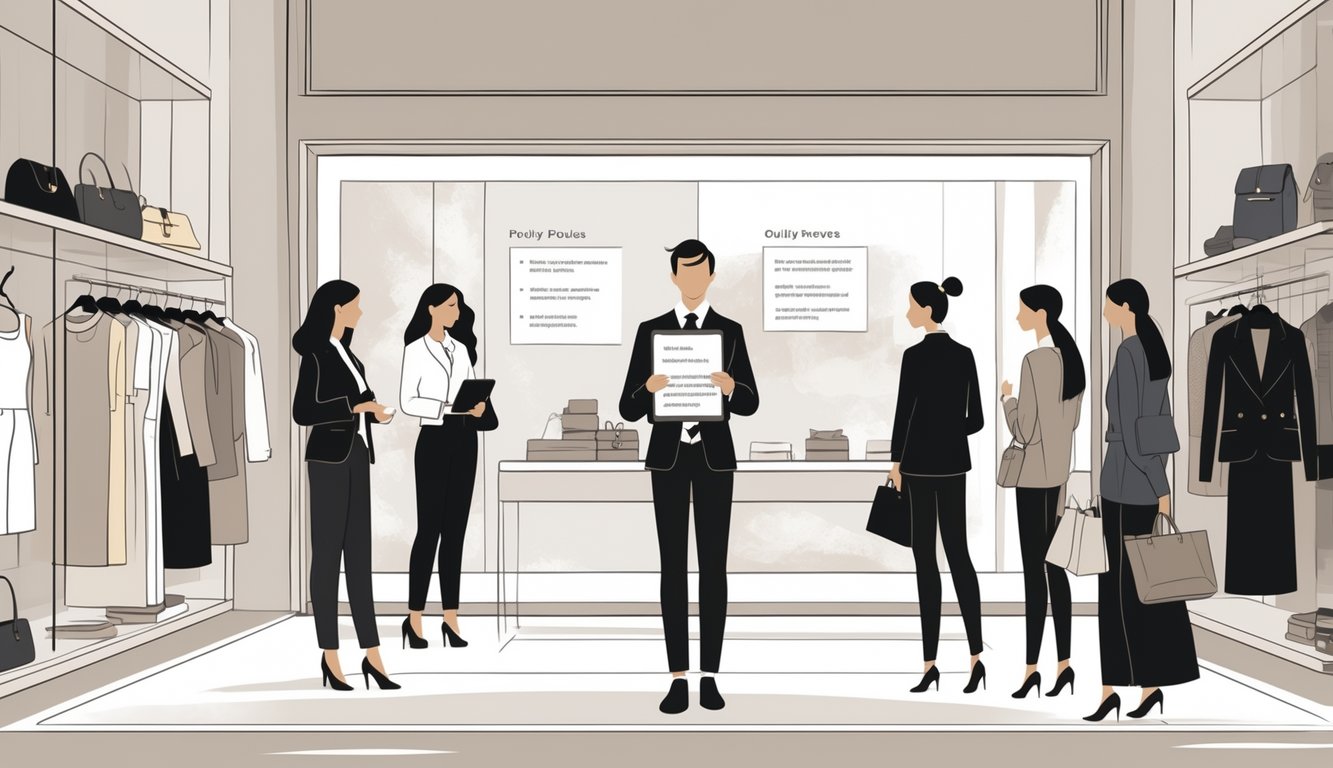
Role of Data and Analytics in Shaping Policies
I wasn’t even thinking about numbers when the courier showed up at 7 am—again—but apparently, that’s all anyone in retail thinks about now. Forget style, it’s all about spreadsheets. Too many shoes going back and forth, piles of jackets no one even tried on. Suddenly, “analytics” isn’t just a buzzword, it’s survival.
Tracking Customer Return Behavior
The chaos behind the scenes? Retailers now track everything. Not just what you buy, but when you return, how often, and even where. My cousin churns through more denim than anyone I know—if someone isn’t tracking that, I’d be shocked.
There’s software that spots the “worn once, back in the box” move. Some brands even catch their own staff doing it (not that they admit it). Industry people love throwing around terms like “correlation analysis” and “data mining”—see Fibre2Fashion’s analytics breakdown. It’s creepy, but if they didn’t, return fraud would just eat up all the profits.
Personalized Limits Based on Analytics
Now, algorithms decide how many sweatshirts you can send back. Seriously. No more one-size-fits-all rules. If you’re a VIP, you get endless chances. If you’re flagged for “abuse signals” (yep, that’s real), the return button just disappears.
Three e-commerce CMOs basically told me analytics rewrote their policies—one said returns on new pants dropped 17% after they rolled this out. They’re even talking about designing policies with live data. Who’s in charge now? The humans, or the data? I don’t know. No one’s figured out if this actually makes customers happier, but they’re all betting on it anyway.
How Return Policy Changes Affect Consumers
My inbox is drowning in return policy updates. No fanfare, just a new line in the fine print. Suddenly, the moisturizer I bought last week isn’t eligible for a refund. It’s wild how much these changes trip people up—refunds get delayed, complaints pile up, and nobody seems to know what’s going on.
Reduced Return Flexibility
Last Friday, I watched a friend—she’s obsessed with spreadsheets—try to return a blazer she never even wore. Tags on, perfect condition. She hit a brick wall: 14-day window, proof of purchase, no exceptions. Those auto-rejection emails are so cold. Social media’s full of people losing it over this. Macy’s, L.L. Bean, Zara—they’re all tightening up, some even charging $10.99 to return clothes by mail.
Stores always spin it as “keeping prices low” or “stopping bracketing.” But the University of Tennessee found complaints and chargebacks spike after every new restriction. Who’s actually happy with this? Not your average shopper.
Increased Scrutiny for Suspected Abuse
Those “anti-abuse” clauses? They’re everywhere now, buried in public justifications. Algorithms scan receipts, dates, even the fabric. Get flagged for “return abuse” and watch your account get weird. Zara, H&M, all of them track patterns. It’s not paranoia—it’s just tech.
More scrutiny means support reps grill you about why you’re returning something, and sometimes people get blacklisted after one “suspicious” return. It’s real. One of my readers—honestly just picky about fit—got a warning email: “returns exceed normal use.” Trust just evaporates. Forbes says 60% of buyers now want in-person returns just to talk to a real person. I miss when the only thing you worried about was the shipping label, not some secret blacklist.



